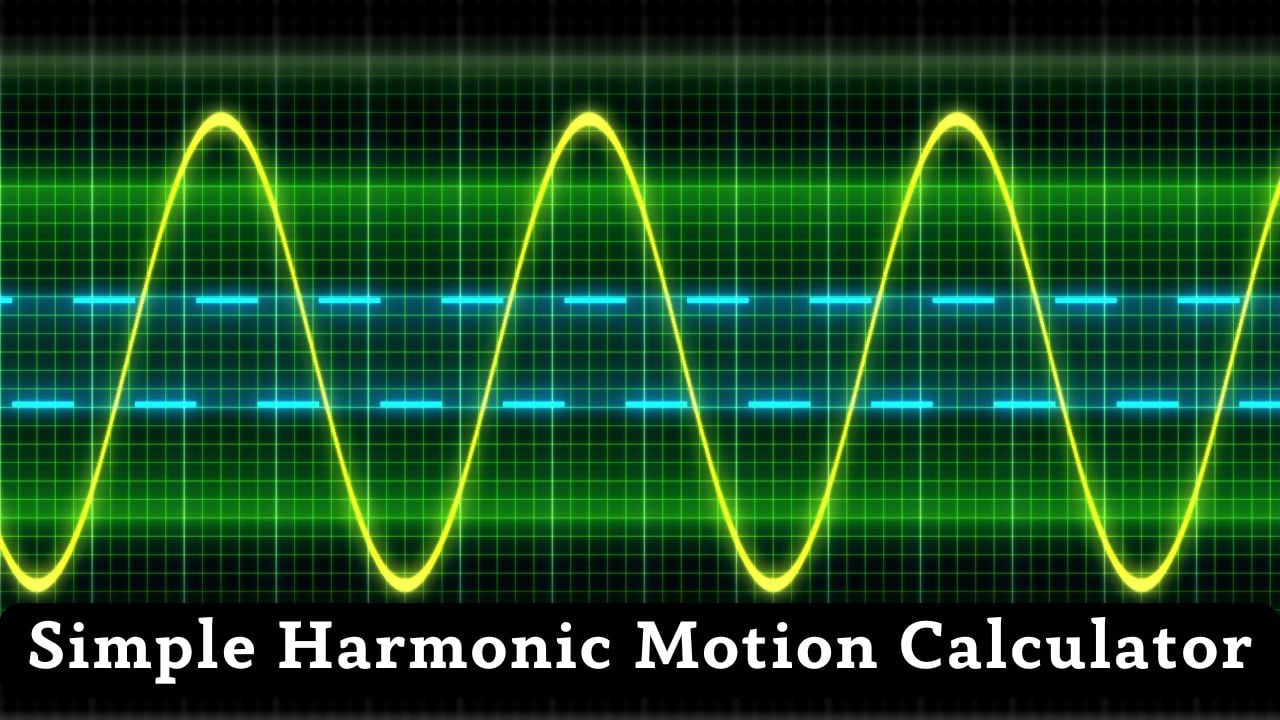
What is Simple Harmonic Motion
Simple harmonic motion (SHM) is one of the most fundamental and beautiful phenomena in all of physics. It describes the back-and-forth motion that occurs when an object experiences a restoring force proportional to its displacement from equilibrium. Think of it as the mathematical heartbeat of the physical world – from atoms vibrating in crystals to planets orbiting stars, SHM governs countless natural processes.
Core characteristics of Simple Harmonic Motion:
- Restoring force: Always proportional to displacement (F = -kx)
- Periodic motion: Repeats itself in regular time intervals (period T)
- Energy conservation: Constant total energy, converting between kinetic and potential
- Sinusoidal patterns: Position, velocity, and acceleration follow sine/cosine functions
- Frequency independence: Period doesn’t depend on amplitude (for ideal SHM)
The Physics Behind SHM: Why Objects Oscillate Predictably
Simple harmonic motion emerges naturally whenever an object experiences a linear restoring force. The key insight is Newton’s Second Law applied to this specific force relationship: F = ma = -kx, which leads directly to the fundamental SHM equation of motion.
The Master Equation: x(t) = A cos(ωt + φ)
- x(t): Position at any time t (meters)
- A: Amplitude – maximum displacement from equilibrium (meters)
- ω: Angular frequency – how rapidly the oscillation occurs (rad/s)
- t: Time variable (seconds)
- φ: Phase constant – determines starting position and direction (radians)
- Period relationship: T = 2π/ω and f = 1/T = ω/2π
This equation tells us everything about the motion! From it, we can derive velocity v(t) = -Aω sin(ωt + φ) and acceleration a(t) = -Aω² cos(ωt + φ). Notice how acceleration is always proportional to negative displacement – this is the hallmark of SHM.
Spring-Mass Systems: The Classic SHM Example
The spring-mass system is the most intuitive example of SHM. When you attach a mass to a spring and set it oscillating, it follows the fundamental period formula that revolutionized our understanding of oscillatory motion.
Period Formula: T = 2π√(m/k)
- Derivation insight: Comes from solving F = ma = -kx differential equation
- Mass dependence: Heavier objects oscillate more slowly (√m relationship)
- Spring stiffness: Stiffer springs (larger k) create faster oscillations
- Amplitude independence: Period doesn’t change with how far you pull the mass!
- Universal relationship: Works for any spring-mass combination in ideal conditions
This remarkable formula reveals that the period depends only on the intrinsic properties of the system (mass and spring constant), not on how you start the motion. This principle, called isochronism, was first discovered by Galileo with pendulums.
Simple Pendulums: Gravity-Driven SHM
For small angular displacements (less than about 15°), a simple pendulum exhibits nearly perfect SHM. The restoring force comes from gravity’s component along the arc, creating a motion independent of the pendulum’s mass!
Pendulum Period: T = 2π√(L/g)
- Length dependence: Longer pendulums swing more slowly
- Gravity effect: Stronger gravity (larger g) means faster oscillations
- Mass independence: Heavy and light bobs have identical periods!
- Historical significance: Used for precise timekeeping for centuries
- Small angle approximation: sin θ ≈ θ (in radians) makes the motion harmonic
Energy in SHM: The Dance Between Kinetic and Potential
One of the most beautiful aspects of SHM is how energy flows back and forth between kinetic and potential forms while the total energy remains constant. This energy exchange creates the rhythmic motion we observe.
Energy Relationships in SHM:
- Total energy: E = ½kA² (constant throughout motion)
- Kinetic energy: KE = ½mv² = ½mA²ω² sin²(ωt + φ)
- Potential energy: PE = ½kx² = ½kA² cos²(ωt + φ)
- Energy conservation: KE + PE = E (always)
- Maximum speeds: v_max = Aω (at equilibrium position)
- Energy proportional to A²: Double amplitude = four times energy
Real-World Applications: SHM Everywhere Around Us
Musical Instruments and Sound
Physics: Vibrating strings, air columns, and membranes create sound through SHM
Key insight: Frequency determines pitch – higher frequency = higher pitch
Example: Guitar string with T = 2π√(μL/T), where μ is linear density and T is tension
Building and Bridge Design
Physics: Structures have natural frequencies that engineers must consider
Key insight: Resonance can cause catastrophic failure if driving frequency matches natural frequency
Example: Tacoma Narrows Bridge collapse due to wind-driven resonance
Atomic and Molecular Vibrations
Physics: Atoms in solids vibrate harmonically around equilibrium positions
Key insight: These vibrations determine material properties like heat capacity
Example: Einstein’s model of atomic vibrations in crystals
Electronic Circuits and Signal Processing
Physics: LC circuits exhibit electrical oscillations analogous to mechanical SHM
Key insight: Same mathematical forms govern mechanical and electrical oscillations
Example: Radio frequency oscillators use L and C to set transmission frequency
